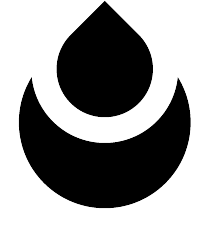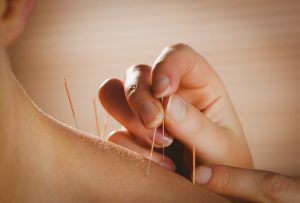Understanding Rotator Cuff Injuries
To effectively manage rotator cuff injuries, it’s important to first understand their causes, symptoms, and how they are diagnosed. This section provides a comprehensive overview of these aspects.
Causes of Rotator Cuff Injuries
Rotator cuff injuries are often the result of wear and tear over time. They can also occur suddenly due to trauma. Common causes include:
- Repetitive Overhead Activities: Sports like baseball and tennis, or occupations like painting and carpentry.
- Aging: Natural degeneration of the tendons over time.
- Acute Injuries: Falls, lifting heavy objects, or sudden jerks.
- Poor Posture: Slouching or improper ergonomics, especially during physical activities.
By understanding what can trigger these injuries, you can take preventive measures and be better prepared to seek timely physiotherapy treatment.
Symptoms and Diagnosis
Recognizing the symptoms of a rotator cuff injury is crucial for early intervention. Common symptoms include:
- Pain: Localized in the shoulder, especially during lifting or reaching.
- Weakness: Difficulty lifting objects or moving the arm in certain directions.
- Limited Range of Motion: Trouble with rotating the arm or raising it overhead.
- Clicking or Popping: Unusual sounds when moving the shoulder.
| Symptom | Description |
|---|---|
| Pain | Localized in shoulder, worsens with activity |
| Weakness | Difficulty lifting or holding items |
| Limited Range of Motion | Trouble rotating or raising arm |
| Clicking or Popping | Sounds during shoulder movement |
If you experience any of these symptoms, it’s important to seek a professional diagnosis. A healthcare provider will typically begin with a physical examination followed by imaging tests such as X-rays, MRIs, or ultrasounds to confirm the diagnosis.
Early diagnosis can greatly improve the effectiveness of physiotherapy for rotator cuff injuries. For more information on physiotherapy services, check out physiotherapy near me to find a clinic nearby.
Understanding the causes and recognizing the symptoms early can lead to more effective treatment and quicker recovery. Be proactive and consult a physiotherapist to design a personalized recovery plan tailored to your needs.
Role of Physiotherapy in Recovery
Benefits of Physiotherapy for Rotator Cuff Injuries
Physiotherapy plays a crucial role in the recovery of rotator cuff injuries. By incorporating a tailored treatment plan, you can significantly improve your shoulder function and reduce pain. Here are some key benefits of undergoing physiotherapy for rotator cuff injuries:
- Pain Reduction: Targeted exercises and manual therapy can help alleviate pain and discomfort associated with rotator cuff injuries.
- Improved Mobility: Physiotherapy focuses on restoring the range of motion, making it easier for you to perform daily activities.
- Strengthening Muscles: Customized strengthening exercises work on the rotator cuff muscles and surrounding areas, promoting stability and preventing future injuries.
- Faster Recovery: With a structured physiotherapy regimen, you can accelerate the healing process and return to normal activities sooner.
- Prevention of Surgery: In many cases, effective physiotherapy can eliminate the need for surgical intervention.
For more details on the methods used, explore physiotherapy exercises.
Importance of Seeking Professional Help
Seeking professional help for physiotherapy is essential for effective recovery. Professional physiotherapists possess the expertise to develop and implement treatment plans tailored to your specific needs. Here is why you should consider professional assistance:
- Accurate Diagnosis: A physiotherapist can provide a precise diagnosis and identify the extent of your injury.
- Personalized Treatment Plans: Expert physiotherapists customize treatment plans based on your condition, individual needs, and goals.
- Guidance and Monitoring: They provide ongoing guidance and monitor your progress, ensuring exercises are performed correctly and adjusting treatments as needed.
- Advanced Techniques: Professionals have access to advanced physiotherapy techniques and equipment that can enhance recovery.
- Education and Support: Physiotherapists educate you about your injury, teaching you how to manage it effectively and prevent future occurrences.
If you’re considering getting professional help, explore options like physiotherapy near me or learn more about specific treatments at a physiotherapy clinic.
By availing professional physiotherapy, you ensure that your recovery journey is safe, efficient, and effective, ultimately helping you regain optimal shoulder function. Understanding the importance of professional guidance can significantly impact the success of your recovery. Check out other recovery options such as sports physiotherapy.
Advanced Physiotherapy Techniques
When recovering from a rotator cuff injury, advanced physiotherapy techniques play a crucial role. These techniques not only help to restore function but also prevent future injuries. Below are some essential methods used in physiotherapy for rotator cuff injuries.
Range of Motion Exercises
Range of motion exercises are designed to improve flexibility and mobility in your shoulder. These exercises are typically done in the early stages of rehabilitation to ensure that your shoulder can move through its full range of motion without pain or discomfort. These movements prevent stiffness and improve joint function.
| Exercise Type | Description |
|---|---|
| Pendulum Exercises | Allow your arm to hang and gently swing it in small circles. |
| Passive Stretching | With the help of a physical therapist, gently stretch your shoulder. |
| Cross-Body Arm Stretch | Bring one arm across your body and use the opposite arm to assist in the stretch. |
Regularly performing these exercises can facilitate smoother movements and prepare your shoulder for more intensive activities. For a list of additional physiotherapy techniques, visit our section on physiotherapy exercises.
Strengthening Exercises
Strengthening exercises aim to build the muscles around your shoulder, providing support and stability to the rotator cuff. These exercises are crucial in the later stages of recovery and help prevent re-injury.
| Exercise Type | Description |
|---|---|
| External Rotation | Using resistance bands, rotate your arm outward to strengthen the shoulder. |
| Internal Rotation | Rotate your arm inward against resistance bands to target different muscle groups. |
| Shoulder Presses | Use light weights to press upward, focusing on controlled movements. |
Strength training helps improve muscle balance and supports shoulder functions essential for everyday activities. For more insights into tailored physiotherapy plans, visit our section on physiotherapy treatment.
Manual Therapy Techniques
Manual therapy involves hands-on techniques performed by a physiotherapist to treat musculoskeletal pain and disability. This can include joint mobilization, manipulation, and soft tissue techniques.
| Technique Type | Description |
|---|---|
| Joint Mobilization | Gentle movements to the joint to improve mobility and decrease pain. |
| Soft Tissue Massage | Techniques that involve applying pressure to soft tissues to relieve tension and promote blood flow. |
| Trigger Point Therapy | Applying pressure to specific points on the muscle to alleviate tension and restore function. |
Manual therapy techniques are tailored to fit individual needs and can be pivotal in accelerating recovery. For more details on professional help, explore our section on physiotherapy clinic.
These advanced physiotherapy techniques collectively contribute to an effective recovery roadmap for rotator cuff injuries. Consistent application of these methods can pave the way for improved shoulder health and functionality. For more personalized advice and treatment plans, consider consulting a professional specializing in physiotherapy near me.
Rehabilitation and Recovery Process
Gradual Progression of Exercises
When recovering from a rotator cuff injury, gradual progression of exercises is crucial. Start with gentle range of motion exercises and slowly incorporate strengthening activities as the shoulder heals. Your physiotherapist will design a custom program to suit your needs, ensuring a safe and effective recovery.
| Phase | Type of Exercises | Duration (weeks) |
|---|---|---|
| Initial | Gentle stretches, passive movements | 1-2 |
| Intermediate | Light resistance training, isometric exercises | 3-6 |
| Advanced | Full range strengthening, functional movements | 7-12 |
Your physiotherapist may recommend specific physiotherapy exercises tailored to your rotator cuff rehabilitation, further optimizing your progress.
Monitoring Progress and Adjusting Treatment
Ongoing evaluation is a key aspect of effective physiotherapy. Regular visits to your physiotherapist allow for monitoring of your progress and necessary adjustments to the treatment plan. This may include changing exercise intensity, modifying techniques, or introducing new activities that align with your recovery stage.
Your physiotherapist will assess:
- Range of motion improvements
- Pain levels
- Strength gains
- Functional capacity
Having a consistent and open line of communication with your physiotherapy clinic is essential to adapt your program as needed and ensure optimal recovery.
Managing Pain and Discomfort
Managing pain and discomfort is a significant part of the recovery process. Your physiotherapist will employ various strategies to alleviate pain while promoting healing. These strategies may include:
- Ice and heat application
- Manual therapy techniques
- Electrical stimulation
- Use of anti-inflammatory measures
Additionally, they will guide you on proper pain management techniques that can be performed at home. Always inform your physiotherapist of any ongoing pain or new discomfort to adjust your physiotherapy treatment accordingly.
| Technique | Purpose | Frequency |
|---|---|---|
| Ice application | Reduce inflammation | 15-20 minutes, 2-3 times/day |
| Heat therapy | Loosen muscles | 15-20 minutes, before exercises |
| Electrical stimulation | Pain relief | As prescribed |
| Manual therapy | Improve mobility | During sessions |
By adhering to your physiotherapist’s recommendations and making appropriate adjustments, you can effectively manage your pain, enhancing the overall recovery from rotator cuff injuries.
For more on managing pain in other conditions, explore physiotherapy for chronic pain and physiotherapy for shoulder pain.
Preventing Future Injuries
Effective prevention strategies can significantly reduce the risk of future rotator cuff injuries. Incorporating post-recovery exercises, adopting ergonomic practices, and understanding your physical limits are essential.
Post-Recovery Exercises and Maintenance
Post-recovery exercises play a crucial role in maintaining shoulder health and preventing re-injury. These exercises should be a part of your daily routine to keep the rotator cuff muscles strong and flexible.
Some useful post-recovery exercises include:
- Shoulder Taps: Strengthens the shoulder muscles.
- Pendulum Exercises: Improves shoulder range of motion.
- External Rotation with Elastic Band: Enhances rotator cuff strength.
| Exercise | Repetitions | Sets |
|---|---|---|
| Shoulder Taps | 10 | 3 |
| Pendulum Exercises | 15 | 3 |
| External Rotation | 10 | 3 |
For a more detailed guide on various exercises, visit our comprehensive guide on physiotherapy exercises.
Lifestyle Changes and Ergonomics
Lifestyle adjustments and ergonomic practices are vital for reducing stress on your shoulders. This includes:
- Correct Posture: Maintain proper posture while sitting or standing.
- Ergonomic Workspaces: Ensure your workspace is set up ergonomically to avoid unnecessary strain.
- Regular Breaks: Take frequent breaks if your job involves repetitive shoulder movements.
For personalized advice, consider consulting with a physiotherapy clinic that can provide tailored recommendations.
Understanding Limits and Listening to Your Body
Understanding your physical limits and listening to your body’s signals can help in preventing overuse injuries. Overexertion can often lead to setbacks or new injuries.
Key practices include:
- Recognizing Pain: Stop any activity that causes discomfort.
- Gradual Progression: Increase activity intensity gradually over time.
- Regular Check-ups: Schedule periodic visits to a physiotherapist to monitor shoulder health.
Learning to identify the early signs of fatigue or strain can be crucial in preventing injuries. For additional support on managing chronic pain, read our article on physiotherapy for chronic pain.
By incorporating these practices into your routine, you can maintain shoulder health and reduce the risk of future rotator cuff injuries.













